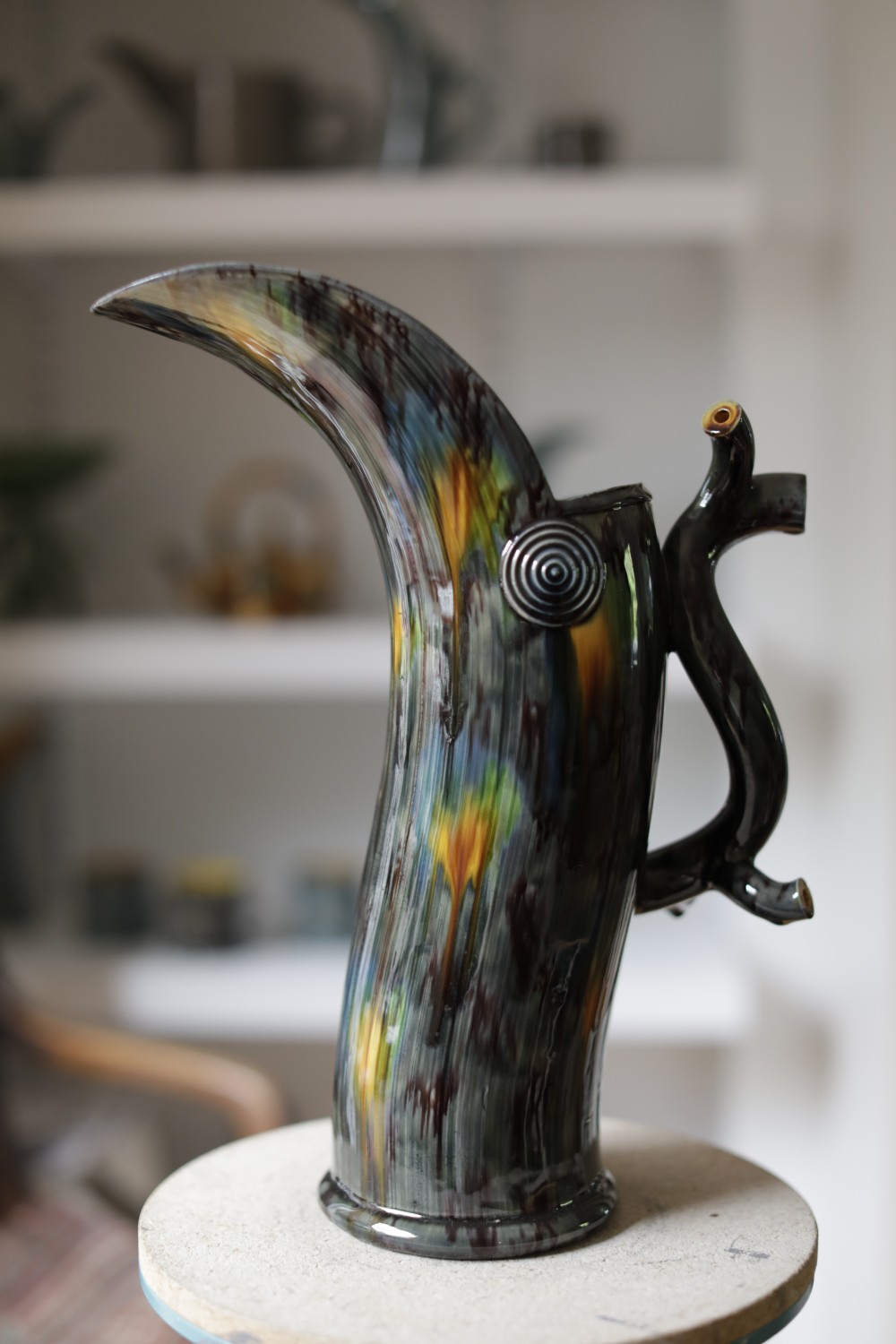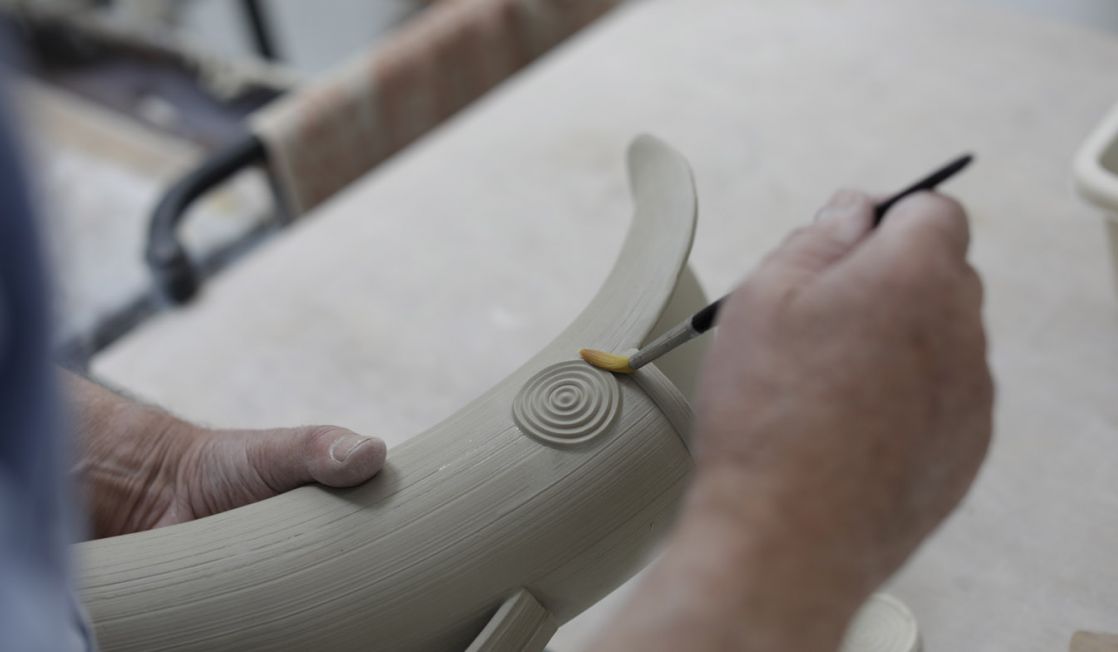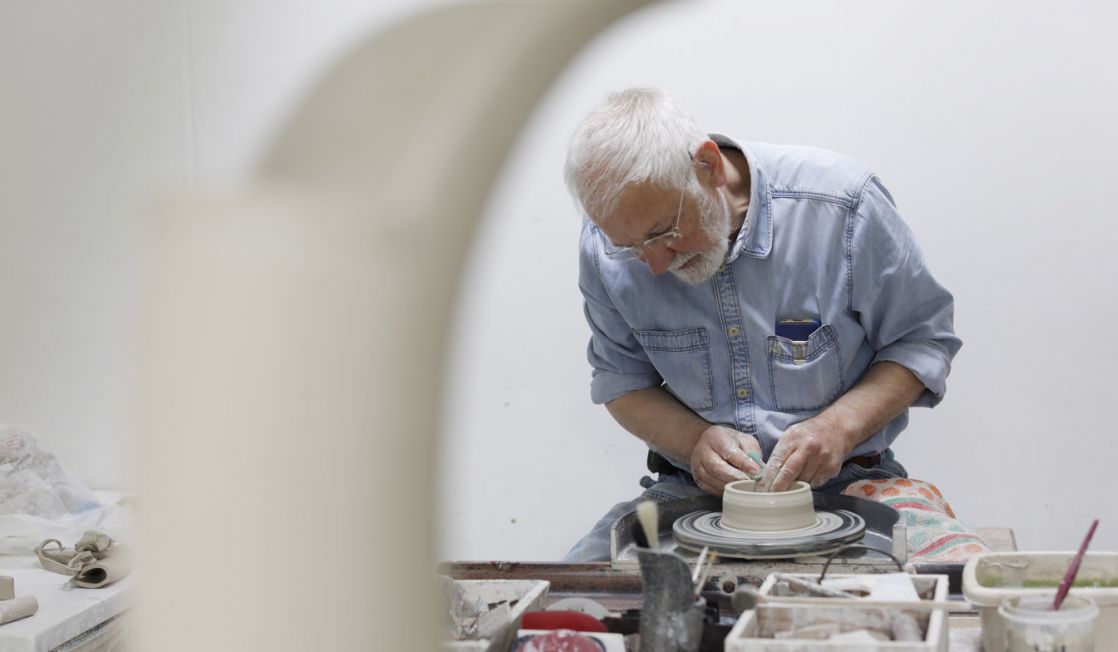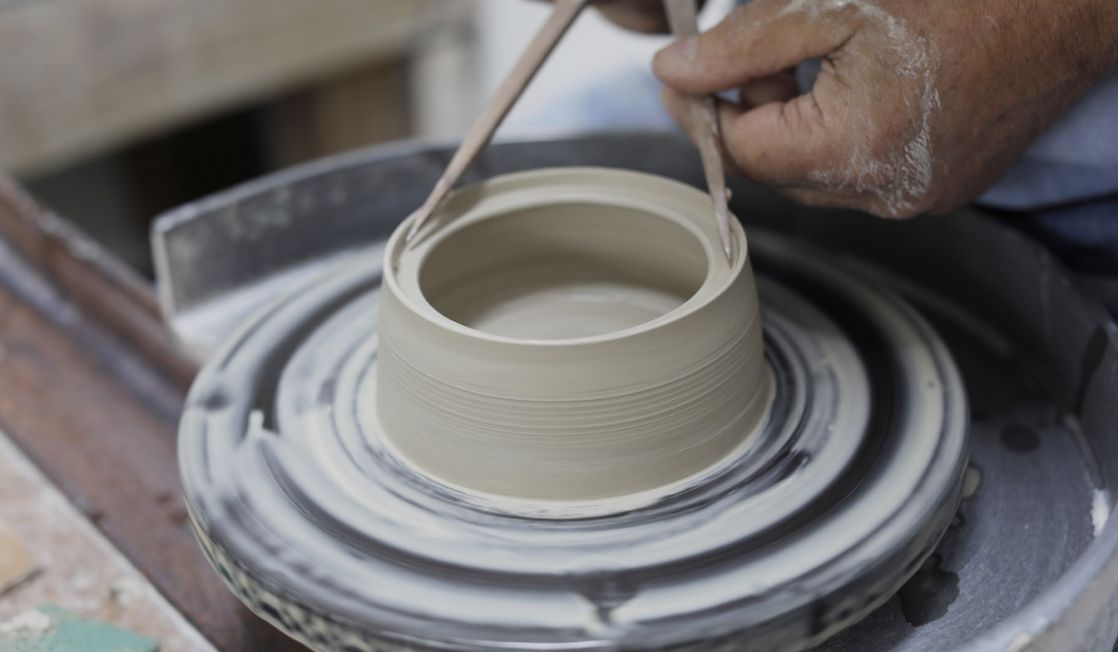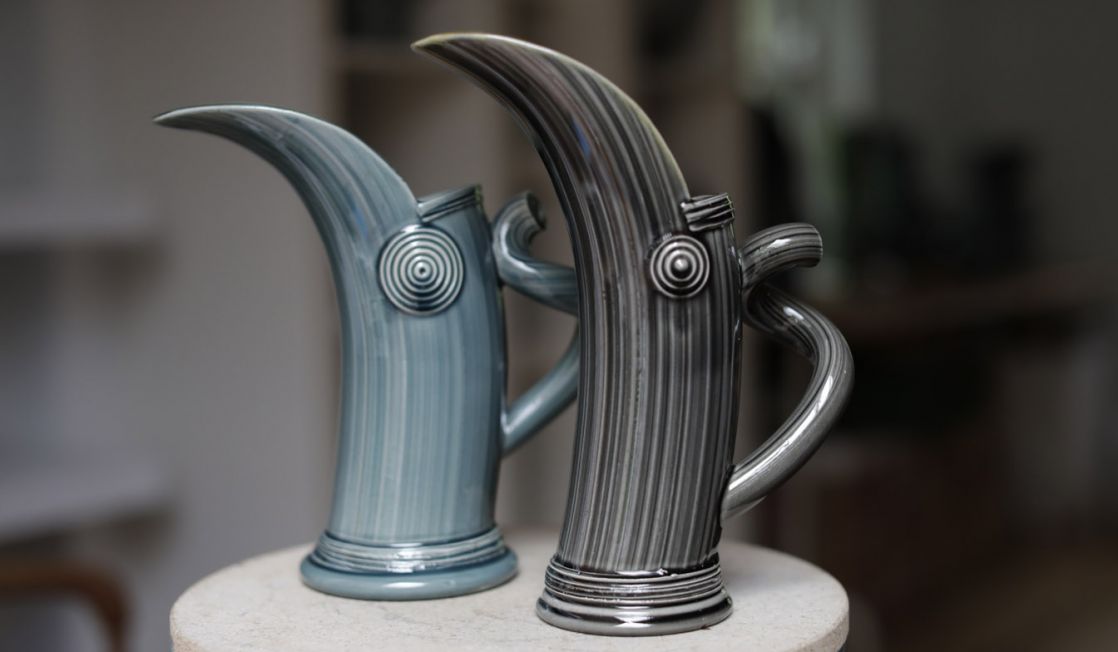Welcome to Ceramic Review
Ceramic Review is the magazine for contemporary and historical ceramics, ceramic art and pottery.
Ceramic Review Issue 334
July/August 2025
Ceramic Review is the magazine for contemporary and historical ceramics, ceramic art and pottery.
July/August 2025
'I continue to make functional pots, but I draw on my enjoyment of playing in a sculptural way with components.' In this video, renowned potter Walter Keeler discusses the processes he uses to extrude, hand build, throw and assemble the various elements of one of his signature jugs. Learn how Walter makes his work in the full step-by-step masterclass inside Ceramic Review issue 294 (November/December 2018).
‘I was born in 1942 and raised in northwest London, where I attended a standard secondary modern school because I failed my 11-plus exam. I wasn’t very academic, but was good at art and woodwork. As a child I was fascinated by ancient artefacts, especially pottery, and often went mudlarking on the Thames foreshore, finding a wide variety of pot sherds that I identified with the help of a local archaeologist and regular visits to museums.
After secondary school I went on to attend Harrow School of Art from 1958 to 1963, where I studied for a Pottery National Diploma in Design and was taught by Victor Margrie and Michael Casson. This was before the establishment of the renowned Studio Pottery Course, which I later taught on with Colin Pearson, Brian Newman, Mo Jupp, Richard Slee, Alison Britton and others.
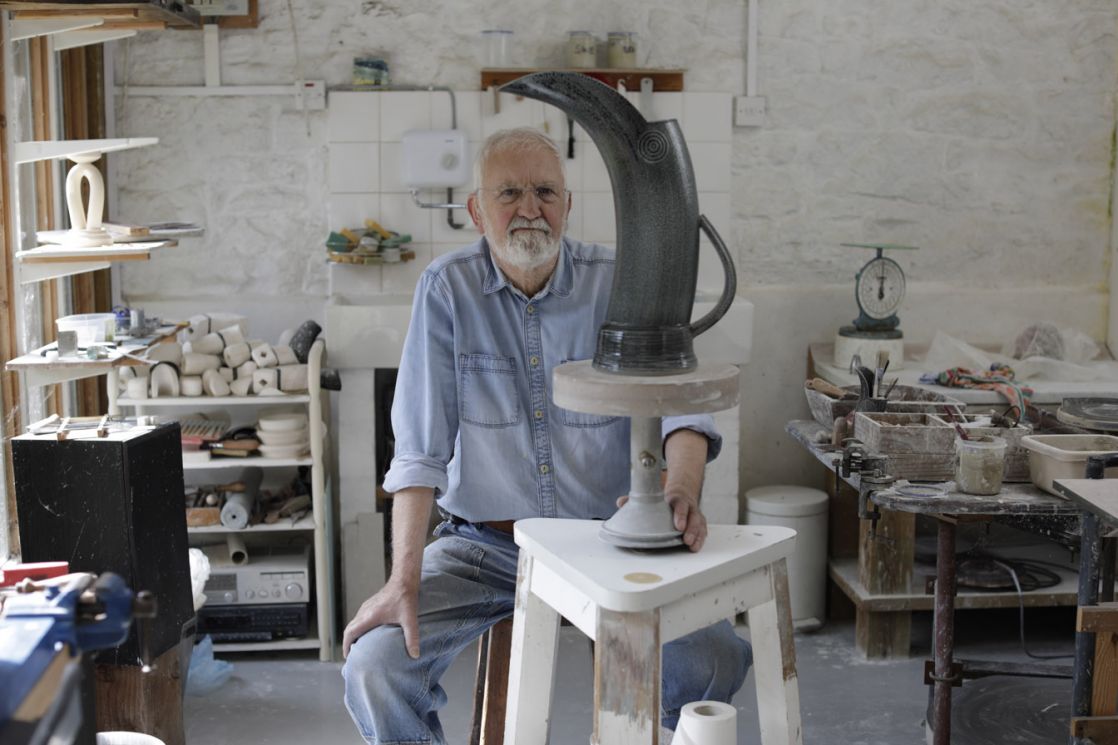
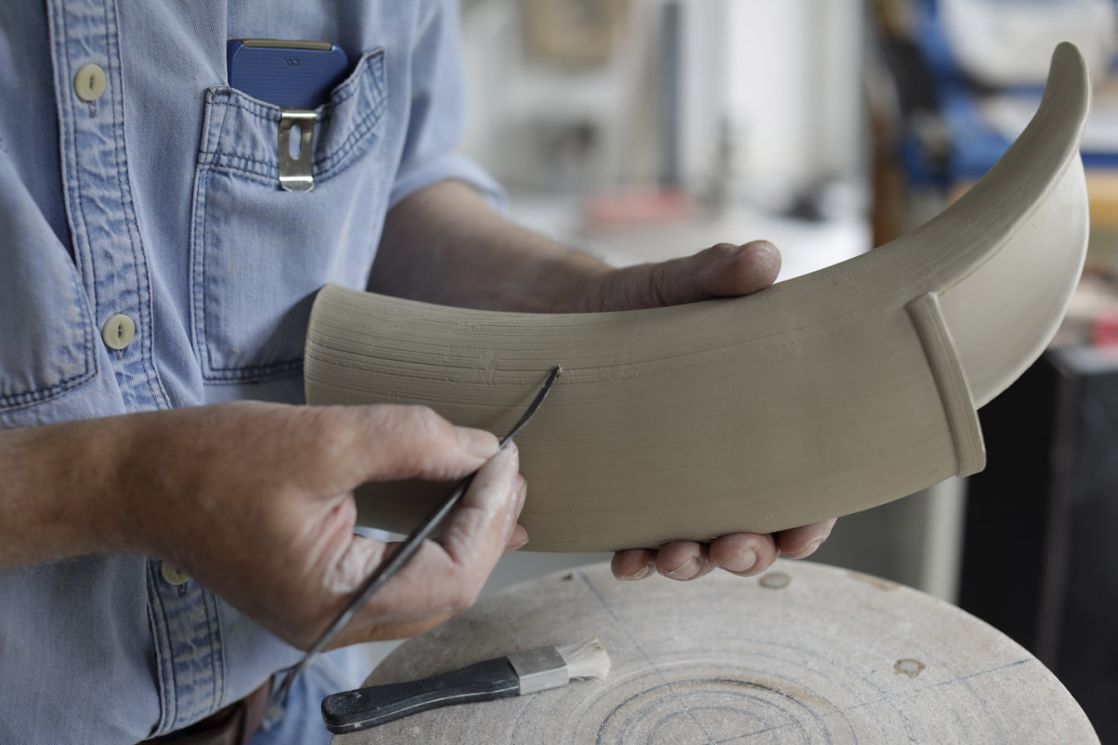
My secondary education led me to believe I was stupid, with few prospects for the future – only my art teacher believed I had any potential. My time at art school proved to be a revelation: it transformed my view of life, broadened my cultural horizons and enabled me to develop a sense of self worth. It was a worthwhile and successful education and an experience I totally committed myself to. This kind of art education has now been eradicated.
My early work was divided between producing one-off pieces concerned with forms and relationships between components, and reasonably well-made but uninspired functional pots made in oxidised stoneware. Later I built a salt kiln (I lead Harrow students on the experimental kiln site) and made ‘sculptural’ pieces, which were quite well received, although I found it increasingly hard to justify them and resolved to commit to only making pots for use.
My wife Madoline and I met as students in the pottery department at Harrow. We bought our first house at Bledlow Ridge in Buckinghamshire and set up our first pottery there in 1965. We moved to Penallt in Wales in 1976 and I decided not to make salt-glazed work, but to produce once-fired functional pots using ash and local clay glazes. However, by the end of the 1970s these pots had lost their vitality, there was a recession and life was proving difficult.
In 1982 I was awarded a Crafts Council bursary for £5000. This not only relieved our precarious finances, but enabled me to pursue a new range of work. I returned to salt glaze, continuing to make functional pots, but I drew on my neglected enjoyment of playing in a sculptural way with components. This led to a change in the dynamic of my career as my new work gave me a much higher profile at home and abroad, which in turn led to international exhibitions and workshops, higher prices and healthier sales.
In the mid 1990s I experimented with earthenware, making pieces inspired by 18th-century Staffordshire pottery. This has become a major element in my practice, offering endless creative possibilities. I continue to salt glaze and have just had my first firing in a new smaller kiln built for me by Joe Finch.’
Learn how Walter makes his work inside Ceramic Review issue 294 (Nov/Dec 2018), which features a full step-by-step masterclass.
